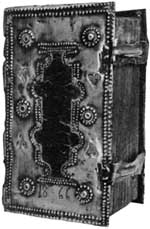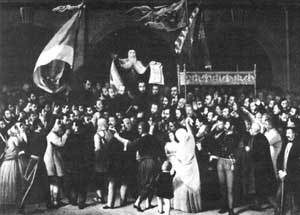|
|
||||
|
|
||||
|
|
||||
|
|
||||
|
|
||||
|
|
|
The Hungarian government replied by the use of force: on June 12th 1848, a war between Serbs and Hungarians started. Austria took side of Hungary at first, demanding from the Serbs to "go back to being obedient". Though weaker in number and poorly equipped, the Serbian army fought courageously, aided by the volunteers from Serbia. As a negative consequence of this war, was the expansion of the conservative fractions. Since the Austrian court turned against the Hungarians in the later stage of revolution, feudal and clerical circles of Vojvodina formed an alliance with Austria and became a tool of the Viennese reaction to Hungarian revolution. The forces of reaction smothered the revolution, helped by the Russian Czarism, in the summer of 1849 and in that way defeated all the national and social movements in the Habsburg monarchy. After the defeat of the revolution, by a decision of the Austrian emperor, in November 1849, an administrative area of Serbian Vojvodina and the Tamis Banat was formed. An Austrian governor seated in Temesvar ruled the area, and the title of Duke belonged to the emperor himself. After the Austrian and Hungarian authorities signed an agreement, the development of capitalism and democratic parliamentary rule had the necessary conditions to develop.  After Austria declared war to Serbia in 1914, all of the cultural and political activities of the Serbs in Vojvodina were banned. The authorities banned all the Serbian press and closed all national institutions. The prominent persons were deported, and many convicted for committing treason. The retaliation mostly affected the population of Srem, who greeted Serbian army as a liberation army at the beginning of war. Many patriots were shot, many hoses burnt, as well as some of the monasteries. The economic hardships provoked by the war affected mainly poorer citizens of all nationalities. After Austria declared war to Serbia in 1914, all of the cultural and political activities of the Serbs in Vojvodina were banned. The authorities banned all the Serbian press and closed all national institutions. The prominent persons were deported, and many convicted for committing treason. The retaliation mostly affected the population of Srem, who greeted Serbian army as a liberation army at the beginning of war. Many patriots were shot, many hoses burnt, as well as some of the monasteries. The economic hardships provoked by the war affected mainly poorer citizens of all nationalities.In November 1918 the Citizens, left wing proclaimed the Republic in Hungary, and the national representatives in Vojvodina formed the boards of people's councils and the Citizens Guard units, which preserved the order until the Serbian army marched in Vojvodina. At the assembly in Novi Sad, on 25th November 1918, people decided that Vojvodina is to be joined with Serbia, forming a new state, the Kingdom of Serbs, Croats and Slovenians, the first Yugoslav state formed on 1st December 1918. The four-year-war (1914-1918) exhausted and disturbed the economic development of Vojvodina. The economy of Vojvodina had to adapt to a new market. The industry developed intensively. In 1938 in Vojvodina there was 710 industrial companies employing over 50000 workers. In WW II, after the surrender in April 1941, Vojvodina was divided among the conquerors, satellite states and quislings into three occupational zones. Backa was invaded by Horty's Hungary and annexed it on 16th December 1941. Srem was given to the newly formed Independent State of Croatia. The quisling government in Serbia formally governed Banat, while it actually presented a Reich's protectorate. People did not accept that division - the national liberation resistance movement treated Vojvodina as a whole. After the liberation in 1945, Vojvodina was included into Federal Republic of Yugoslavia as an autonomous region. |

 May Assembly in Sremski Karlovci 1848.
May Assembly in Sremski Karlovci 1848.